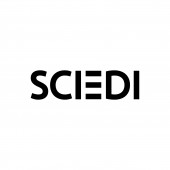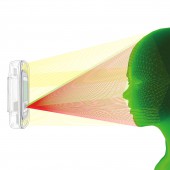DESIGN NAME:
Ezalor
PRIMARY FUNCTION:
3D Face Recognition Access Control
INSPIRATION:
Face recognition access control accuracy is affected by light. Users have to look into the strong light dozens of times a day, making their eyes very uncomfortable.
Our algorithm and camera allow accurate recognition in extremely dim environments. so we only need diffusely reflected light to meet our needs. Soft light enhances comfort. The financial level anti-spoofing ability shut out the fake-face. It offers high-level security and ergonomic simplicity that fits effortlessly into your life.
UNIQUE PROPERTIES / PROJECT DESCRIPTION:
1. 3D face recognition terminals embedded with deep-learning algorithms for access control in office scenarios.
2. 3D structured light and IR technology for dual liveness detection to achieve fast face recognition and identity verification.
3. Soft diffusely reflected light to ensure reliable performance and improve user’s experience by avoiding direct strong light.
4. User-friendly design - 4.5-inch color LCD screen with voice prompt, and no-touch authentication for the ultimate in hygiene.
OPERATION / FLOW / INTERACTION:
When the user approaches the device, it automatically starts to recognize faces. If the light is dim, it will gradually glow. Intuitive setup and use can reduce staff costs in the long run. Face data is encrypted and stored locally, and the recognition process does not require networking to ensure privacy.
1. Setup:
-Access login interface through mobile phone App.
-Register information.
-Add 3D face access control device.
2. Access with face recognition.
PROJECT DURATION AND LOCATION:
The project began in September 2019 in Beijing and will be completed in March 2020.
FITS BEST INTO CATEGORY:
Digital and Electronic Device Design
|
PRODUCTION / REALIZATION TECHNOLOGY:
To distinguish it from the glare-filling method of direct light sources commonly used in the traditional system, we have adopted a circle of diffuse reflection surfaces to achieve well-distributed and soft fill-in light. After repeated experiments on the curved surface design and spraying effect of the fill light surface, as well as verification tests on numerous prototypes, we found a spraying technique to reflect light sources and an optimal curvature that can fully illuminate the human face and still be soft and comfortable on the eyes.
The device adopts a durable and easy structural design, which can be mass-produced at a lower mold cost. By using a special partially-recycled ABS material, the pure white texture of the main body can be maintained even after long-term use. The panel of the product is made of 1mm highly transparent optical tempered glass. The screen and camera are configured as a mono-block through black ink screen printing, which further perfects a rounded outline for the screen and fits seamlessly into any environment.
SPECIFICATIONS / TECHNICAL PROPERTIES:
178mm 31mm 178mm
TAGS:
Face recognition access control, 3D structured light camera, face recognition, face access control, liveness detection, financial security level
RESEARCH ABSTRACT:
This product uses 3D face recognition technology with high recognition accuracy and can prevent deception by non-live images. It can thwart attacks with 2D printed faces, photographs, 3D face masks, 3D head models and recorded videos.
2D face recognition algorithms have reached an accuracy rate of 99.80%, according to the test result of the face recognition algorithm Insightface on the LFW database. The recognition accuracy rate is even comparable to that of humans. Limitations, however, do exist, mainly arising from data loss in 2D information, making it hard to fully read a real face and causing issues in face recognition and liveness detection accuracy.
In 2017, Apple officially released the iPhone X. Its 3D structured light technology replaced fingerprint sensing with Face ID, impacting the 3D sensing technology market. Compared with 2D technology, the 3D face model has a stronger description ability and can better read real faces, greatly improving the accuracy of face recognition and liveness detection.
Based on the aforementioned advantages, the 3D face recognition technology developed by Ezalor can be widely used in Internet of Things applications, internet payment systems, new retail channels, mobile payments, banking services, security settings, and government establishments among other scenarios, for better prevention against attacks and optimal face recognition accuracy.
CHALLENGE:
The most difficult part of the product design lies in developing miniature 3D depth cameras, efficiently calculating the depth of objects from the screen and running face recognition algorithms on a low-power embedded platform to ensure better user experience.
To solve these problems, the Ezalor team conducted a series of experiments for overall solution design and hardware selection and designed a new set of deep reconstruction algorithms for the embedded platform. While ensuring accuracy, the reconstruction time is reduced to one-fifth of the original. At the same time, the face recognition algorithm was re-optimized for the implementation scenarios of the product by using SIMD technology, enabling users’ access without any disturbance.
While designing the product, we paid special attention to the user experience from different angles and in different scenarios, especially when light conditions are not ideal. The diffuse reflection is used to provide fill light on the face, which not only improves the recognition process but also avoids direct light that may cause discomfort to users’ eyes.
ADDED DATE:
2020-02-03 14:40:27
TEAM MEMBERS (1) :
IMAGE CREDITS:
Huachao Gong, 2019.
|










